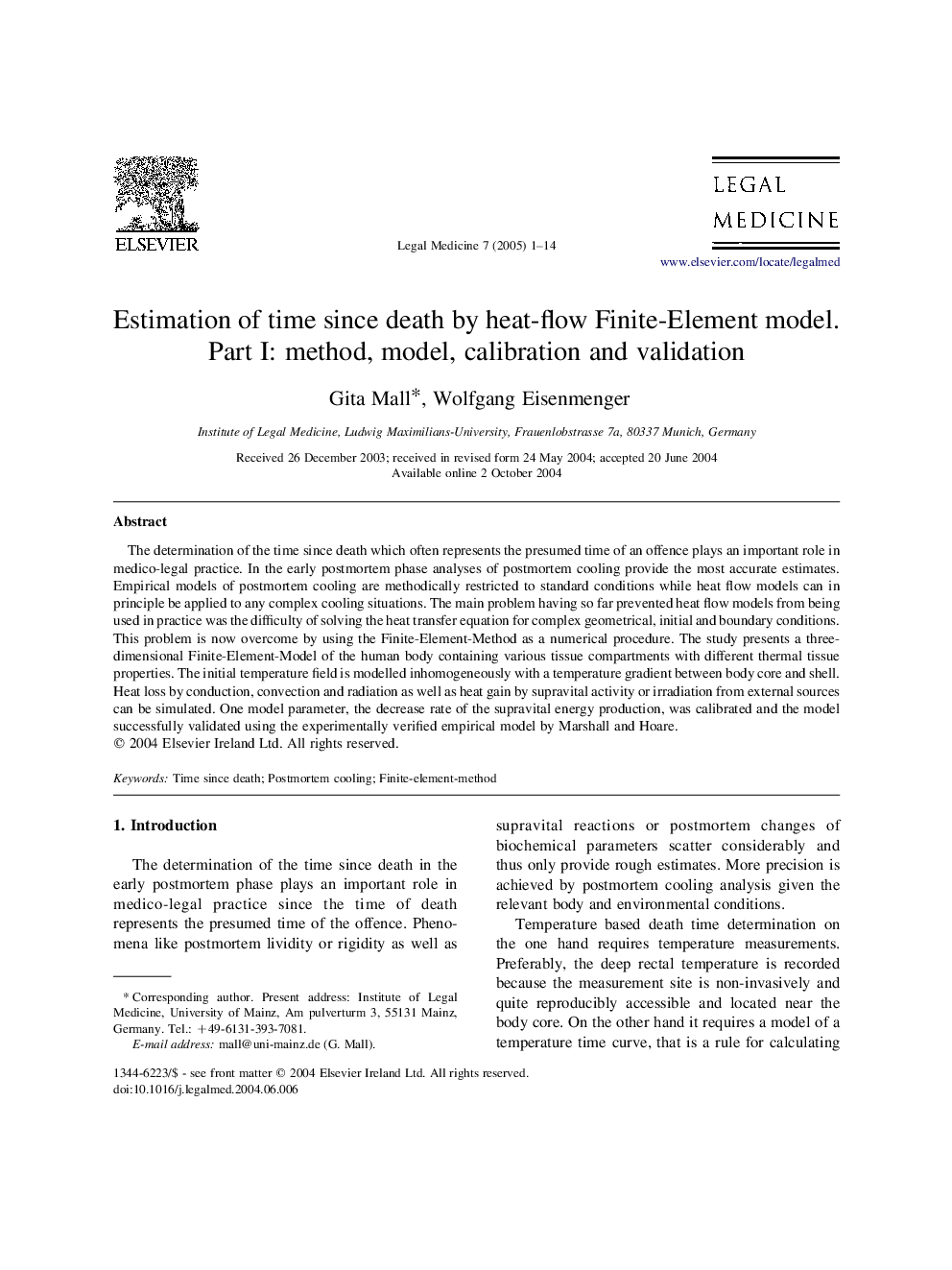| Article ID | Journal | Published Year | Pages | File Type |
|---|---|---|---|---|
| 10254593 | Legal Medicine | 2005 | 14 Pages |
Abstract
The determination of the time since death which often represents the presumed time of an offence plays an important role in medico-legal practice. In the early postmortem phase analyses of postmortem cooling provide the most accurate estimates. Empirical models of postmortem cooling are methodically restricted to standard conditions while heat flow models can in principle be applied to any complex cooling situations. The main problem having so far prevented heat flow models from being used in practice was the difficulty of solving the heat transfer equation for complex geometrical, initial and boundary conditions. This problem is now overcome by using the Finite-Element-Method as a numerical procedure. The study presents a three-dimensional Finite-Element-Model of the human body containing various tissue compartments with different thermal tissue properties. The initial temperature field is modelled inhomogeneously with a temperature gradient between body core and shell. Heat loss by conduction, convection and radiation as well as heat gain by supravital activity or irradiation from external sources can be simulated. One model parameter, the decrease rate of the supravital energy production, was calibrated and the model successfully validated using the experimentally verified empirical model by Marshall and Hoare.
Related Topics
Physical Sciences and Engineering
Chemistry
Analytical Chemistry
Authors
Gita Mall, Wolfgang Eisenmenger,
